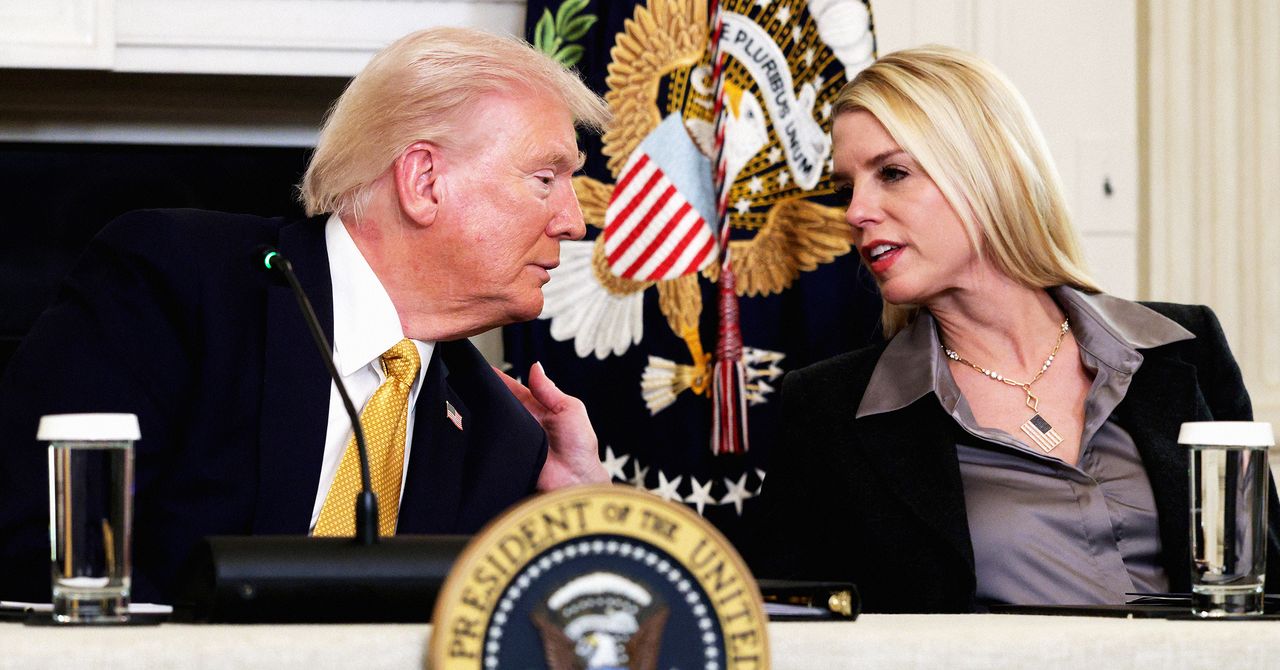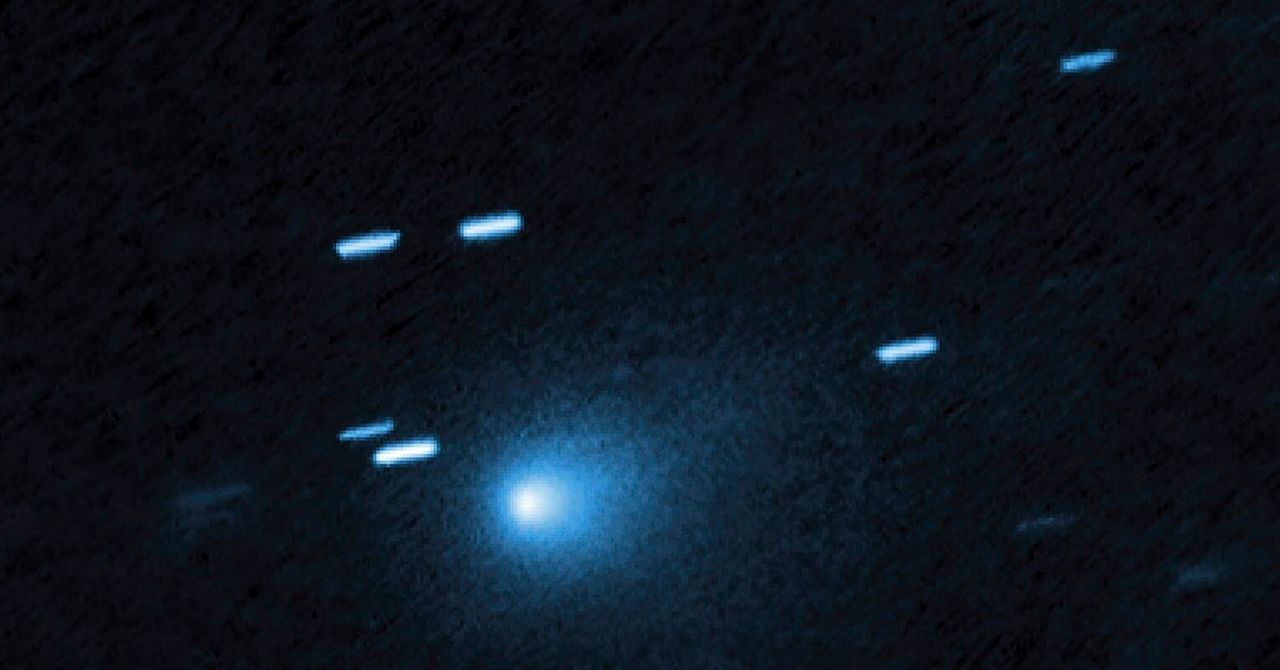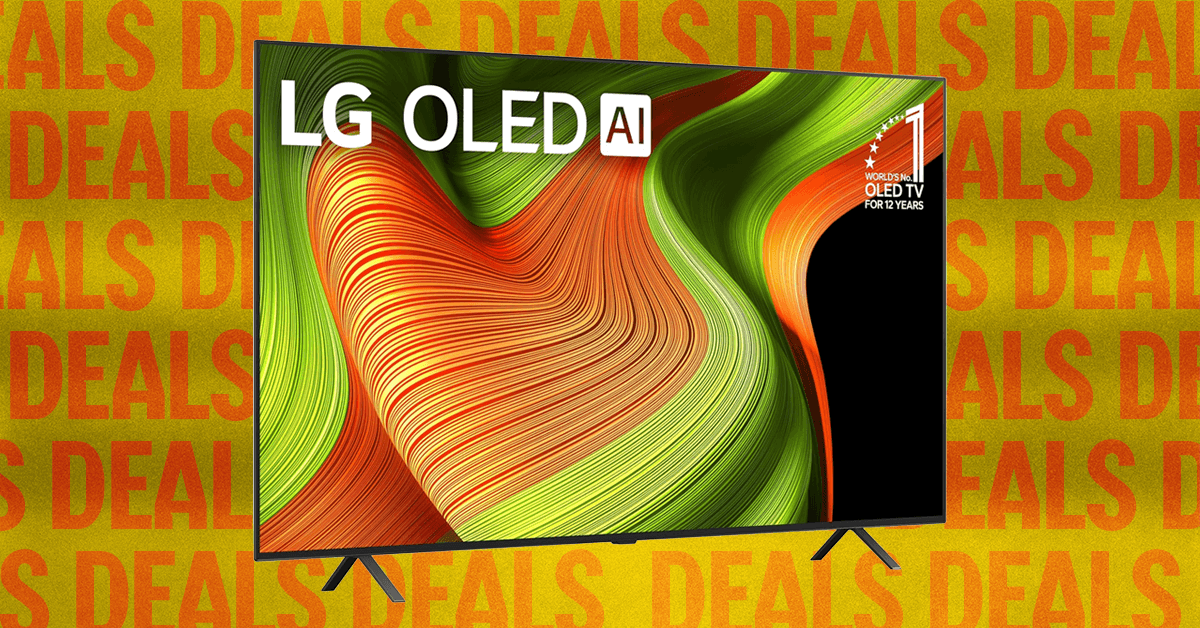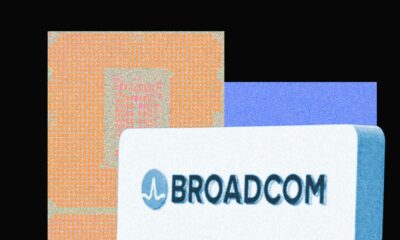Tech
Nvidia CEO Dismisses Concerns of an AI Bubble. Investors Remain Skeptical

Nvidia CEO Jensen Huang didn’t need any prompting on Wednesday to address the elephant in the room. “There’s been a lot of talk about an AI bubble,” he said on an earnings call before quickly getting to his main point: “From our vantage point, we see something very different.”
Huang went on to spend about five minutes trying to explain how the chipmaker, which has soared to become the world’s most valuable publicly traded company over the past three years, would be able to sustain unprecedented customer demand. His thesis is that AI is taking over the world, and Nvidia chips will be sorely needed to power that technological revolution underway. “All industries, across every phase of AI, across all of the diverse computing needs in a cloud, and also from cloud to enterprise to robots,” will need Nvidia’s products, Huang said.
The CEO’s pep talk ultimately drew mixed reactions from Wall Street. Nvidia shares have fallen about 10 percent in recent weeks after hitting an all-time high in late October. Shares budged up about 5 percent in after hours trading on Wednesday after Nvidia reported record quarterly sales and Huang made his anti-bubble comments. But the increase was not enough to fully make up for the recent selloff.
Nvidia has enjoyed three years of booming success since OpenAI debuted ChatGPT and caused a massive surge in demand for the company’s GPUs, which are used to train and operate generative AI systems. Nvidia dominates the global market for GPUs, and its latest releases have become highly sought after with demand far exceeding supply. On Wednesday, Nvidia executives reiterated that it has about $500 billion in unfilled orders.
The company has used its newfound wealth to buy back its own shares and invest billions of dollars in AI companies, including top users and customers of its chips such as ChatGPT developer OpenAI, data center operator CoreWeave, and Elon Musk’s xAI, which develops the chatbot Grok.
Nvidia’s deals have fueled concerns among some investors that the company is unsustainably propping up sales. AI industry executives contend that partnering closely with Nvidia is crucial for getting access to chips and technical support, and that their revenues will eventually increase enough to fund their GPU purchases.
On Wednesday’s call, Huang addressed a financial analyst’s question about the rationale for investing in companies such as OpenAI. “The partnership that we have with them is one so that we could work even deeper from a technical perspective, so that we could support their accelerated growth,” Huang said. “I fully expect that investment to translate to extraordinary returns.”
Tech
Trump Takes Aim at State AI Laws in Draft Executive Order

US President Donald Trump is considering signing an executive order that would seek to challenge state efforts to regulate artificial intelligence through lawsuits and the withholding federal funding, WIRED has learned.
A draft of the order viewed by WIRED directs US Attorney General Pam Bondi to create an “AI Litigation Task Force,” whose purpose is to sue states in court for passing AI regulations that allegedly violate federal laws governing things like free speech and interstate commerce.
Trump could sign the order, which is currently titled “Eliminating State Law Obstruction of National AI Policy,” as early as this week, according to four sources familiar with the matter. A White House spokesperson told WIRED that “discussion about potential executive orders is speculation.”
The order says that the AI Litigation Task Force will work with several White House technology advisors, including the Special Advisor for AI and Crypto David Sacks, to determine which states are violating federal laws detailed in the order. It points to state regulations that “require AI models to alter their truthful outputs” or compel AI developers to “report information in a manner that would violate the First Amendment or any other provision of the Constitution,” according to the draft.
The order specifically cites recently enacted AI safety laws in California and Colorado that require AI developers to publish transparency reports about how they train models, among other provisions. Big Tech trade groups, including Chamber of Progress—which is backed by Andreessen Horowitz, Google, and OpenAI—have vigorously lobbied against these efforts, which they describe as a “patchwork” approach to AI regulation that hampers innovation. These groups are lobbying instead for a light touch set of federal laws to guide AI progress.
“If the President wants to win the AI race, the American people need to know that AI is safe and trustworthy,” says Cody Venzke, senior policy counsel at the American Civil Liberties Union. “This draft only undermines that trust.”
The order comes as Silicon Valley has been upping the pressure on proponents of state AI regulations. For example, a super PAC funded by Andreessen Horowitz, OpenAI cofounder Greg Brockman, and Palantir cofounder Joe Lonsdale recently announced a campaign against New York Assembly member Alex Bores, the author of a state AI safety bill.
House Republicans have also renewed their effort to pass a blanket moratorium on states introducing laws regulating AI after an earlier version of the measure failed.
Tech
NASA Finally Weighs In on the Origin of 3I/ATLAS

After the temporary shutdown of the US government, NASA has finally started its nonessential work back up. It’s starting off with a bang: The agency called a press conference to show its hitherto reserved images of the interstellar object 3I/ATLAS. NASA scientists also confirmed that 3I/ATLAS is in fact a comet, contrary to the speculations about alien technology flooding the internet.
During the broadcast, a panel of scientists showed the results of observations obtained by different NASA missions across various points in the journey 3I/ATLAS has taken. Each provided insights in the infrared, visible, ultraviolet, and gamma-ray spectrums, providing a better understanding of the true nature of 3I/ATLAS.
Among the most relevant data are images captured by the Mars Reconnaissance Orbiter and MAVEN satellites, as well as those from the Psyche and Lucy space probes, and even from the SOHO solar probe. The scientists clarified that all the data will be publicly available for anyone to investigate.
3I/ATLAS Images Shared by NASA
SOHO: Image From the Sun-Monitoring Probe
This orange-toned photo comes from NASA. The SOHO probe that monitors the sun managed to capture 3I/ATLAS between October 15 and 26. In the words of the agency, this image was a surprise. They did not expect that the object could be seen from so far away, 358 million km.
MRO: One of the Best Close-Ups of 3I/ATLAS
One of the most anticipated photos of the comet is the one obtained by the Mars Reconnaissance Orbiter satellite in October, when 3I/ATLAS approached at “only” 29 million km. NASA finally shared it. The image shows the frozen body surrounded by a cloud of characteristic dust ejected as the comet approached the sun.
STEREO: The Photo Confirming the Shape of 3I/ATLAS
The STEREO observatory analyzes the behavior of the sun. To get at least one coherent image of the comet, scientists had to stack several images taken at different exposures. In the end, the interstellar object was revealed as a bright orb against a noisy background.
MAVEN: A Glimpse of Comet Hydrogen
MAVEN is a Mars orbiter. Its lens captured this ultraviolet spectrum image of 3I/ATLAS before it reached its closest approach to the red planet. It shows hydrogen emitted from different sources. The portion on the left belongs to the comet’s signature.
PUNCH: Another Solar Glimpse
PUNCH is a polarimeter that monitors the sun’s corona and its heliosphere. However, its lenses made it possible to visualize the comet’s tail for weeks from October to September. In this animation, each frame represents a daily snapshot, while the streaks in the background are produced by the movement of the stars.
On December 19, 2025, the comet will reach its closest point to Earth. It will pass at a completely safe distance: about 267 million km away. To put that in perspective, it’s equivalent to almost 700 times the distance between the Earth and the moon, and 1.8 times the separation between our planet and the sun. This flyby will have no effect on the Earth.
Both NASA and other space agencies are expected to initiate additional observing campaigns to capture better photographs and relevant information about the third confirmed interstellar object in history.
This story originally appeared in WIRED en Español and has been translated from Spanish.
Tech
This Excellent LG OLED Is Deeply Discounted Before Black Friday

If you’re looking to make the move to an OLED screen, but don’t feel like stomaching the high price tag usually associated with the tech, you might consider the LG B5 OLED. It’s already a great screen at the full price, but Best Buy currently has it marked down to just $600. That’s a significant markdown for this TV, which can typically be found between $1,000 and $1,200.
The star of the show is LG’s OLED panel, the type typically found on TVs twice the price. If you’re curious why that’s so important, we have a great explainer that breaks down the difference between all the different panel types. The important takeaway here is that the pixels emit their own light, allowing individual spots of the screen to be perfectly black. The result is impressive, with incredible contrast between the brightest and darkest spots that’s best understood by seeing it in person.
The other areas of the screen are excellent as well. Our reviewer Ryan Waniata opined that “there’s a sumptuous touch to images of all sorts,” and liked the colors as well, which were accurate and sharp without any adjustment. The screen has a natural and vivid performance to it that feels all the more impressive when you consider the price point.
It has the chops for some gaming too, with feature support that meets or beats higher-end screens. With four proper HDMI 2.1 inputs, your consoles won’t need to fight for the good ports, which is a nice surprise for the price point. It can reach a refresh rate of up to 120Hz, which is just fine for most console gamers, and has both AMD FreeSync Premium and Nvidia G-Sync to make sure everything is smooth, plus Auto Low Latency Mode for quick response times.
Overall, the LG B5 OLED is a solid value at its full price, but the steep discount here makes this a really sweet upgrade or first OLED. If you’re still not sold, make sure to swing by our roundup of all the best TVs available, including the B5 and other OLEDs.
-

 Tech5 days ago
Tech5 days agoNew carbon capture method uses water and pressure to remove CO₂ from emissions at half current costs
-

 Politics6 days ago
Politics6 days agoBritish-Pakistani honoured for transforming UK halal meat industry
-

 Business5 days ago
Business5 days agoThese 9 Common Money Mistakes Are Eating Your Income
-

 Business5 days ago
Business5 days agoWhat’s behind Rachel Reeves’s hokey cokey on income tax rises?
-

 Sports4 days ago
Sports4 days agoTexas A&M officer scolds South Carolina wide receiver after touchdown; department speaks out
-

 Sports5 days ago
Sports5 days agoApple scrapping MLS Season Pass service in ’26
-

 Tech6 days ago
Tech6 days ago$25 Off Exclusive Blue Apron Coupon for November 2025
-

 Fashion7 days ago
Fashion7 days agoAdidas & Patrick Mahomes expand NIL programme with Texas Tech athletes











%25202.23.16%25E2%2580%25AFp.m..png)








